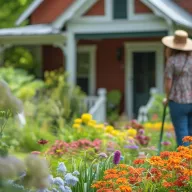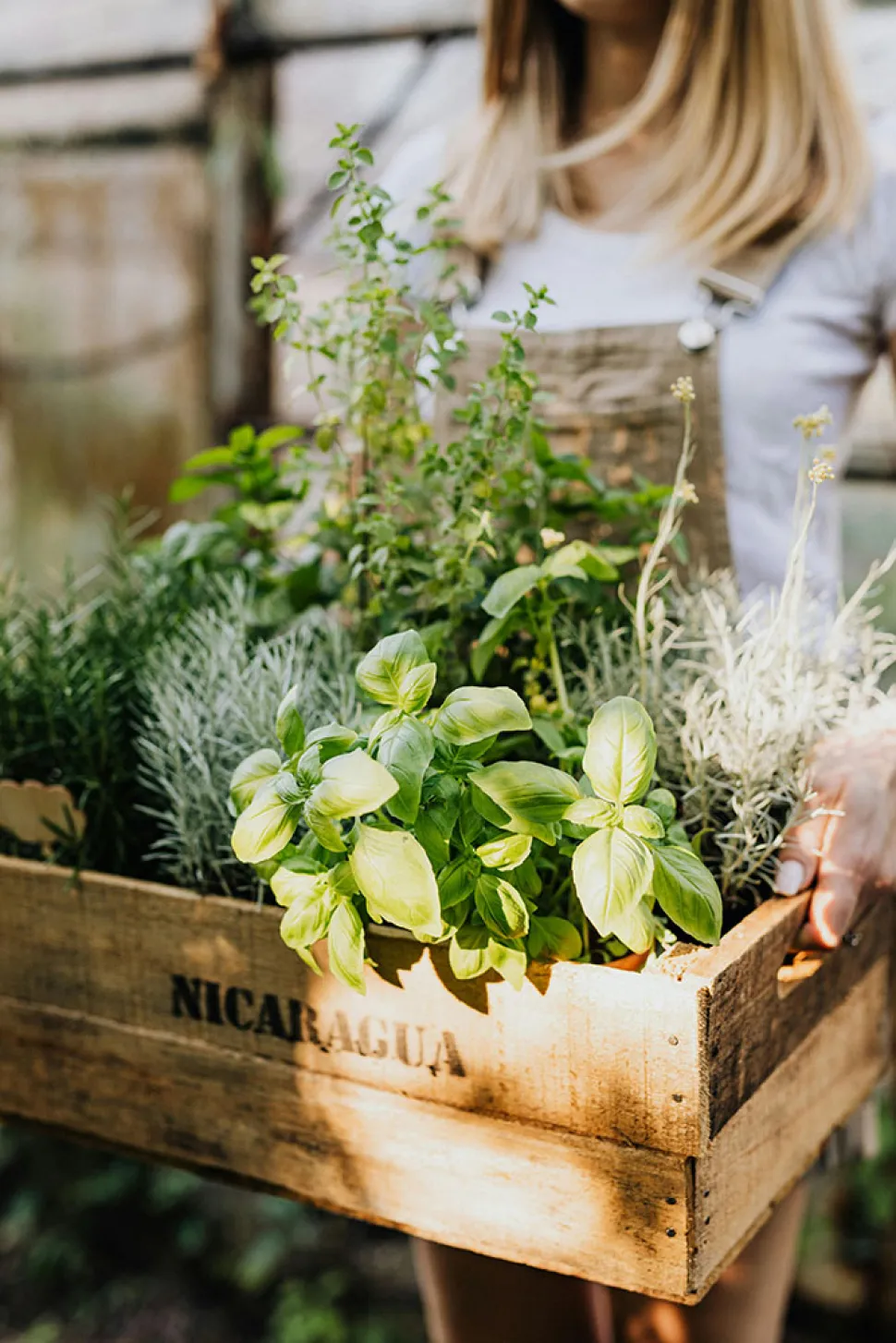
Guide to creating your own herb garden
Article for :All parent plants
When creating an aromatic garden, anticipation is key. From choosing plants to installing them, we explain how to go about installing thyme, basil, savory and chives in your garden, on your balcony or even in your kitchen.
Step 1: Decide on the type of garden you want to create
Depending on the space you have available, you have several options for creating your herb garden.

In the ground, in pots or suspended, you'll always find a solution for planting your aromatic herbs
Planting herbs in a garden
If you have a garden, you can plant your aromatic herbs in the ground. You can either devote a dedicated space to them and create an herb garden separate from the rest of your plot, or opt for the "jardin de curé" technique. You can then mix flowers, herbs and vegetables.
You can also create an aromatic garden in pots or tubs. In particular, you'll find pedestal planters on the market that allow you to grow and harvest leaves without bending down. Another advantage is that you can separate varieties and better manage growing conditions.
Creating an aromatic garden on your balcony
If you have a terrace or balcony, you'll need to plant your herbs in pots. Most species, such as common thyme (Thymus vulgaris), rosemary (Salvia rosmarinus), common Oregano (Origanum vulgare) and common Basil (Ocimum basilicum) are ideal for this purpose.
However, you need to be careful when choosing containers. Their size and shape must be adapted to the plant. For example, for rhizomatous species such as spearmint (Mentha spicata) or lemon balm (Melissa officinalis), a window box encourages the development of offshoots. For sub-shrubs and shrubs such as thyme, choose containers that are sufficiently heavy and deep.
As in a garden, you can opt for a planter or a standing planter. Certain models, with shelves or steps, allow you to save space and plant more varieties in a smaller area.
Creating an indoor herb garden
Most aromatic plants can be grown in pots. So you can create an indoor herb garden in your kitchen or living room.
Brightness is the crucial parameter for a successful indoor herb garden. Your plants need at least six hours of bright light a day, even in the depths of winter. To achieve this, place them just behind a south- or west-facing window. You can even use a grow lamp.
Make sure your plants don't dry out. Don't place them next to a radiator or fireplace.
Step 2: Choose the varieties you want to plant
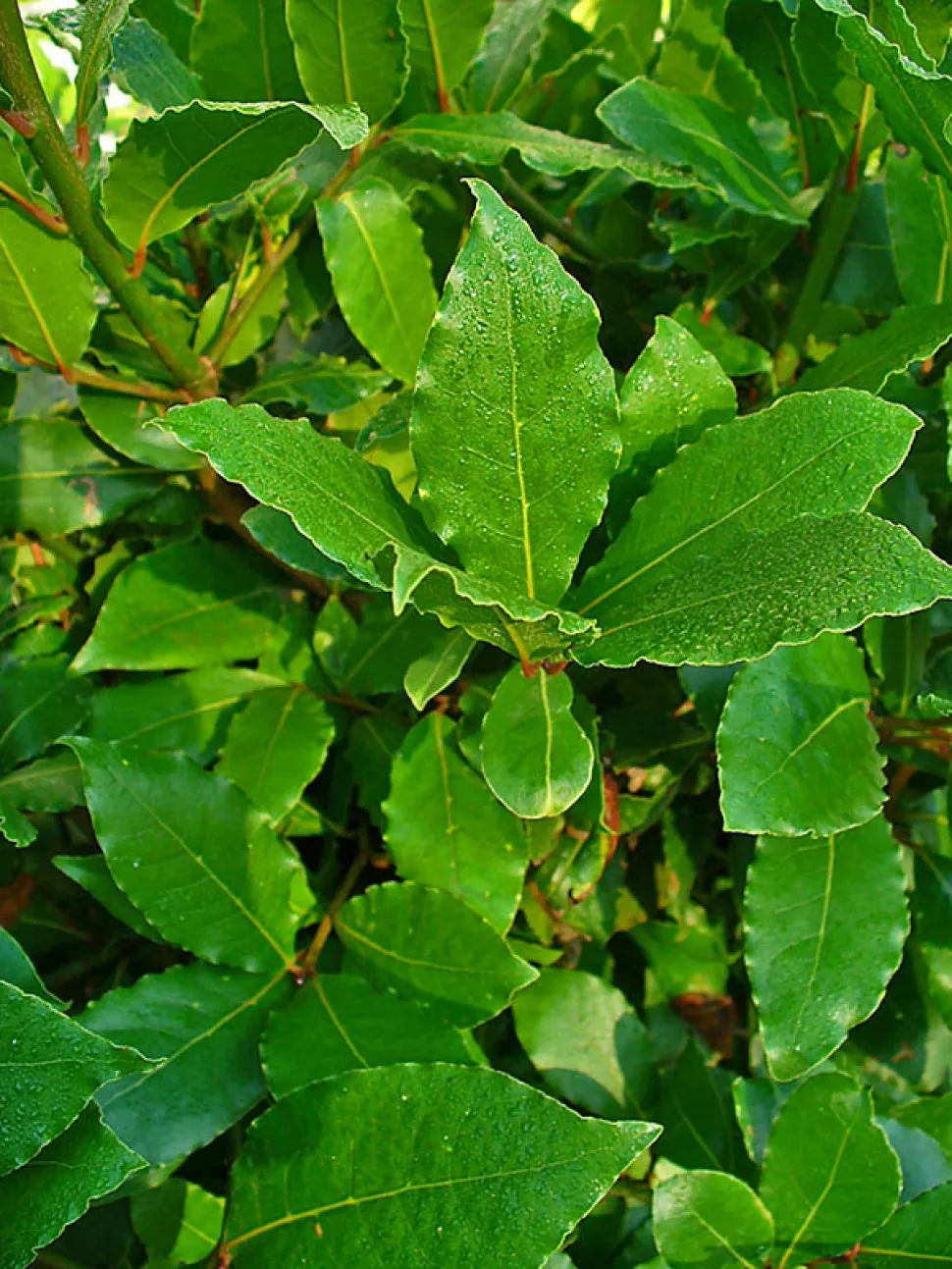
Yellow laurel is a must if you have a garden - Photo by H. Zell / Wikipedia
There are hundreds of different aromatic plants. While some, such as tarragon, oregano, parsley (Petroselinum crispum), chives and coriander (Coriandrum sativum) are must-haves, there's nothing to stop you from planting more original varieties, such as salad burnet (Sanguisorba minor), saffron crocus (Crocus sativus) or marjoram (Origanum majorana). Choose according to your tastes and needs. And if you're short of inspiration, check out our article on the best aromatic plants to have at home.
Also take into account the space you have available. For example, yellow Laurel (Laurus nobilis) is a shrub that easily reaches two meters in height. It's impossible to keep it indoors! You can consider putting it on your balcony, provided you have enough space and your terrace can support its weight.
Finally, find out about growing conditions to make sure you meet the plant's requirements. Find out about recommended exposure and hardiness. Some varieties, such as tarragon (Artemisia dracunculus), are resistant to cold and frost, provided the soil remains dry. They can be planted in the ground in regions with dry winters. Elsewhere, you'll need to plant them in pots and shelter them from the rain in the off-season.
Step 3: Organize your herb garden
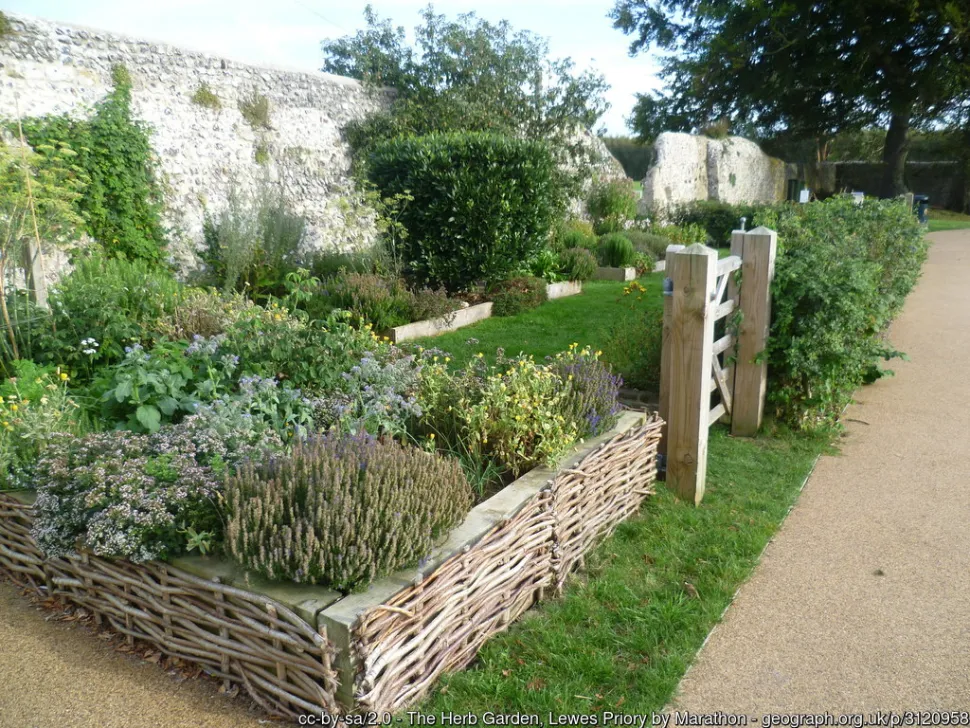
It's best to get organized before planting - Photo by Marathon / Geograph
Think about how you're going to arrange the different plants. This is essential if you've decided to create your herb garden in the ground, or in a container mixing several varieties.
Group plants according to their growing conditions (exposure, substrate, watering, hardiness). For example, you could plant Mediterranean species such as thyme, rosemary and oregano together. All require a very sunny spot, a well-draining substrate and little water. In winter, a simple mulch will suffice to protect them. However, you can't put basil, which needs a very bright spot, and mid-shade plants like parsley and coriander in the same pot. It's also best to avoid cohabiting sage (Salvia officinalis), which needs sun and a dry, draining substrate, with chervil, which likes ever-moist soil and half-shade.
Finally, consider the height and development of your plants. After a while, sub-shrubs like thyme and rosemary risk overshadowing other perennials. Think about this when you plant!
Step 4: plant!
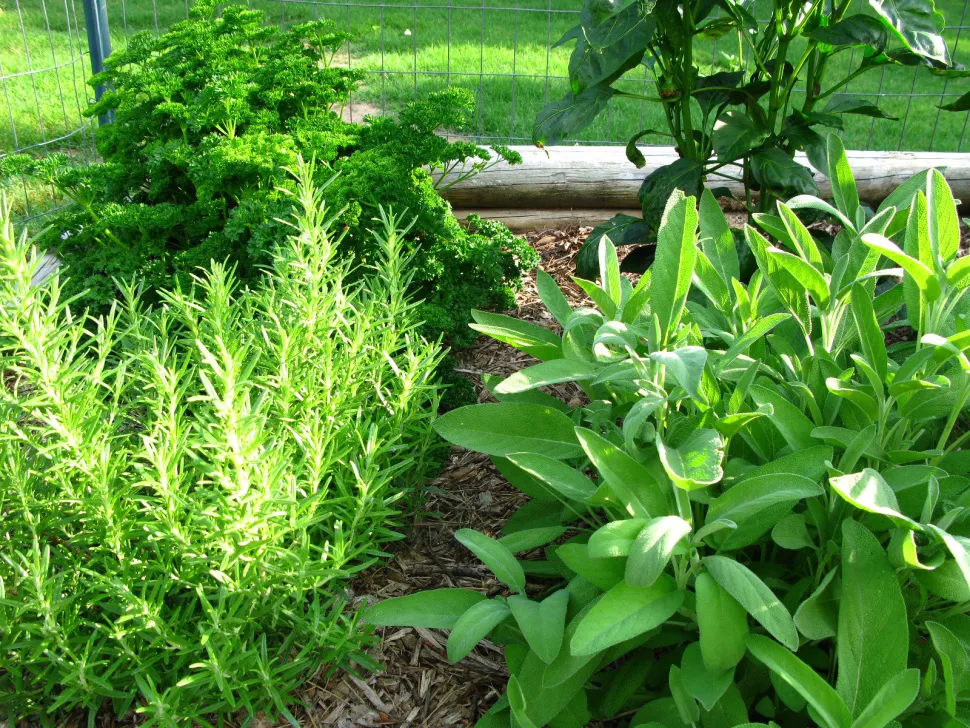
Planting is not the most complicated step! Photo by Oakleyoriginals / Flickr
Have you made it this far? Congratulations! Now it's time to plant your herbs.
Start by soaking your plants to moisten them. Fill a bucket with room-temperature water, remove the cups and immerse the root ball for a few minutes.
If you're growing an aromatic garden in the ground, you'll need to prepare the soil. You'll need to weed, dig and, if necessary, amend the soil. You may need to add compost to enrich your growing medium, or gravel and pozzolan to lighten it. On the same plot, you may have to delimit several spaces and work them differently.
For potted herbs, simply fill the containers with the recommended potting soil. However, when using terracotta models, immerse them for a few hours in water 24 hours before planting. This soaks the clay and prevents the material from capturing all the water during the first few waterings.
Then plant your plants. Remember to space them far enough apart so that each one can develop and give you a satisfactory harvest.
Finally, water copiously to encourage rooting and remove air bubbles. For water-hungry varieties, add organic or mineral mulch. This will help keep the soil cool and space out watering.
Four tips for a successful herb garden
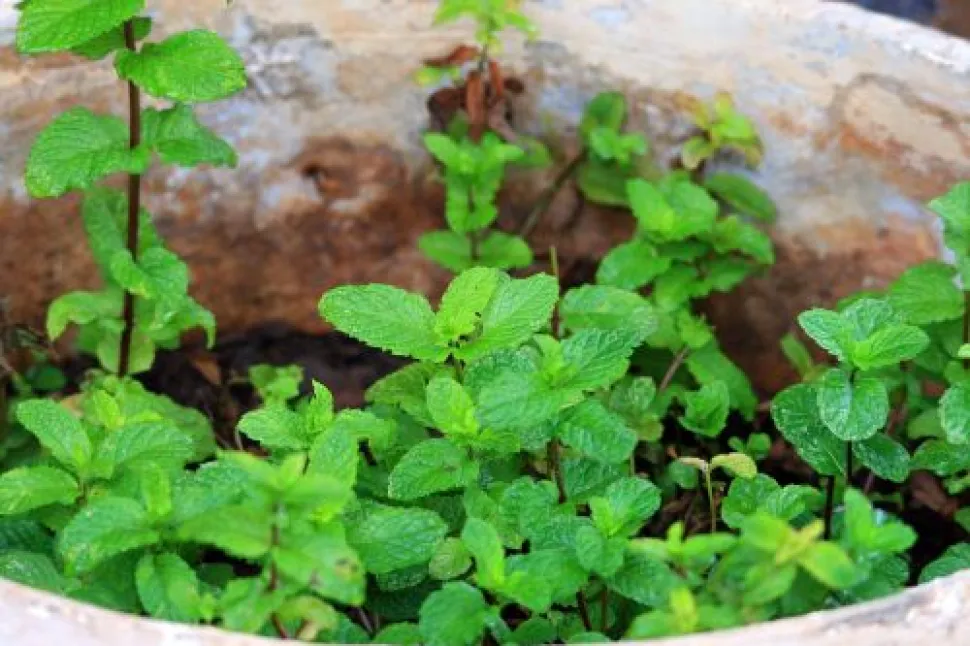
Mint is better grown in pots than in the ground - Photo by Lynn Greyling /Needpix
Get the facts before you start
Before adding a plant to your herb garden, find out about its growing conditions. If you have pets, make sure it's not toxic.
To have all this information at hand, download the Monstera app. You'll also receive personalized reminders when it's time to water or repot your plants.
Contain invasive species
Some aromatic rhizome plants, such as mint and lemon balm, quickly become invasive. They take over other crops and it soon becomes difficult, if not impossible, to contain their growth. Better safe than sorry, then, and plant them in pots.
If you really want them in your garden, mulch or use a rhizome barrier to prevent them from producing too many shoots.
Plant at the right time
You need to respect the plant's rhythm when planting, repotting or sowing. Most species need time to root before the first frosts arrive. They should therefore be planted in spring. Some hardier herbs can also be planted in autumn.
Label your plants
Labels are a great way to add a decorative touch to your herb garden. But they're especially useful for identifying your plants in mid-winter, when all you've got left are stems. It's also very practical for seedlings and young shoots: nothing looks more like a young parsley plant than a young coriander plant!
By Servane Nemetz
on 29-04-2025 at 08h46
on 29-04-2025 at 08h46




